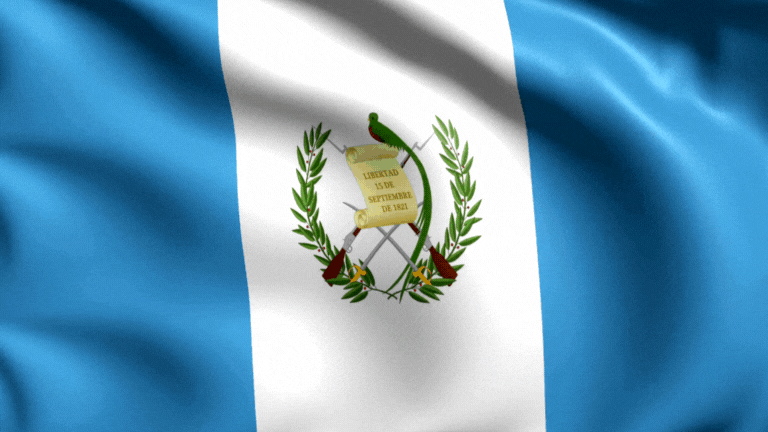Please be aware that this article may contain links to products and services we recommend. If you click on any of these links, we may earn a commission at no extra cost to you. We only endorse products and services that we believe will add value to our readers. Learn more here.
Guatemala Flag: History & Symbolism
Hack The Quiz
5/8/20242 min read
This article explores the history and symbolism of the Guatemala flag, explaining the country’s location in Central America and how its design represents Guatemala’s natural beauty, independence, and peace.
Where is Guatemala?
Guatemala is located in Central America, bordered by Mexico to the north and west, Belize to the northeast, Honduras to the east, El Salvador to the southeast, and the Pacific Ocean to the southwest. Known for its rich Mayan heritage, mountainous landscapes, and rainforests, Guatemala is the most populous country in Central America.
Guatemala gained independence from Spain on September 15, 1821, along with other Central American countries. The current flag, adopted in 1871, reflects the country’s natural beauty and its commitment to peace and sovereignty.
The History of the Guatemala Flag
The Guatemalan flag was officially adopted on August 17, 1871, and its design was inspired by the flag of the Federal Republic of Central America, a political union of Central American nations that existed after independence from Spain. The blue and white stripes were retained to symbolize the region’s shared history.
In the center of the flag is the national coat of arms, added to distinguish Guatemala’s flag as unique. The coat of arms includes symbols of the country’s independence, military defense, and commitment to peace. Since its adoption, the flag has become a proud symbol of Guatemala’s identity and sovereignty.
Breaking Down the Guatemala Flag’s Design
The Guatemalan flag consists of three vertical stripes—two light blue stripes on the sides and one white stripe in the center. The national coat of arms is displayed in the middle of the white stripe. Each element of the flag’s design holds significant meaning tied to Guatemala’s history and values.
Let’s break down the elements of the flag:
The Blue Stripes
The two blue stripes represent the Pacific Ocean and the Caribbean Sea, which border the countries of Central America. The blue also symbolizes Guatemala’s sky and the ideals of freedom and justice.
The White Stripe
The white stripe in the center stands for peace and purity, reflecting Guatemala’s commitment to maintaining peace and harmony both within its borders and in the wider region.
The Coat of Arms
The coat of arms features a Quetzal, Guatemala’s national bird, symbolizing liberty and independence. The quetzal is perched on a scroll that bears the date September 15, 1821, the day Guatemala and other Central American nations declared independence from Spain. Below the scroll are two crossed rifles, representing the country’s readiness to defend its sovereignty, and two crossed swords, symbolizing honor. Above the scroll is a laurel wreath, symbolizing victory and peace.
Final Thoughts
The flag of Guatemala is a meaningful symbol of the country’s natural beauty, its fight for independence, and its dedication to peace. The blue and white colors represent the oceans, sky, and the ideals of justice and freedom, while the coat of arms highlights the nation’s independence and readiness to protect its sovereignty.
Since its adoption in 1871, the flag has been a source of national pride, flown during important events such as Independence Day on September 15 and international gatherings. It stands as a reminder of Guatemala’s journey to independence and its commitment to peace and unity.
Expand your mind ...
Explore trivia that broadens your understanding and knowledge of the world.
WE ARE HERE FOR YOU
JOIN US and hack the quiz
info@hackthequiz.com
© 2024. All rights reserved.



